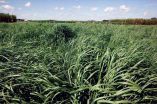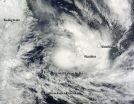(Press-News.org) COLUMBUS, Ohio - Children whose parents think they're God's gift to the world do tend to outshine their peers - in narcissism.
In a study that aimed to find the origins of narcissism, researchers surveyed parents and their children four times over one-and-a-half years to see if they could identify which factors led children to have inflated views of themselves.
Results showed that parents who "overvalued" their children when the study began ended up with children who scored higher on tests of narcissism later on.
Overvalued children were described by their parents in surveys as "more special than other children" and as kids who "deserve something extra in life," for example.
"Children believe it when their parents tell them that they are more special than others. That may not be good for them or for society," said Brad Bushman, co-author of the study and professor of communication and psychology at The Ohio State University.
Bushman conducted the study with lead author Eddie Brummelman, a postdoctoral researcher at the University of Amsterdam in the Netherlands. The study appears in the early online edition of the Proceedings of the National Academy of Sciences.
Brummelman said that parents with the best of intentions may overvalue their children, thinking that will help boost their self-esteem.
"Rather than raising self-esteem, overvaluing practices may inadvertently raise levels of narcissism," Brummelman said.
While the dangers of narcissism are well known, its origins are not, according to Bushman. This is the first prospective study to see how narcissism develops over time.
The study involved 565 children in the Netherlands who were 7 to 11 years old when the study began, and their parents. They completed surveys four times, each six months apart. All the surveys used in the study are well established in psychology research.
Parental overvaluation of children was measured with a scale that asked moms and dads how much they agreed with statements such as "My child is a great example for other children to follow."
Both children and parents reported how much emotional warmth parents showed, with participants indicating how much they agreed with statements like "I let my child know I love him/her" (or "My father/mother lets me know he/she loves me").
Children were measured for levels of both narcissism and self-esteem. While many people believe narcissism is just self-esteem on steroids, that is not true, according to the researchers.
In this study, children with high self-esteem, rather than seeing themselves as more special than others, agreed with statements that suggested they were happy with themselves as a person and liked the kind of person they were.
"People with high self-esteem think they're as good as others, whereas narcissists think they're better than others," Bushman said.
Self-esteem and narcissism also develop in different ways, the study found.
While parental overvaluation was associated with higher levels of child narcissism over time, it was not associated with more self-esteem. In contrast, parents who showed more emotional warmth did have children with higher self-esteem over time. Parental warmth was not associated with narcissism.
"Overvaluation predicted narcissism, not self-esteem, whereas warmth predicted self-esteem, not narcissism," Bushman said.
Parental overvaluation was connected to narcissism even after the researchers took into account the narcissism levels of the parents. In other words, it is not just that narcissistic parents have narcissistic children - the parental overvaluation played a key role.
A previous study by Brummelman, Bushman, and several colleagues showed just how much some parents overvalue their children. In this study, parents were presented with topics that their 8- to 12-year-old children should be familiar with, such as the astronaut "Neil Armstrong" and the book "Animal Farm." The parents were asked how familiar they believed their children were with those items.
But the researchers also included items that did not exist, such as "Queen Alberta" and "The Tale of Benson Bunny."
"Overvaluing parents tended to claim that their child had knowledge of many different topics - even these nonexistent ones," Brummelman said.
But the researchers noted that parental overvaluation is not the only cause of narcissism in children. Like other personality traits, it is partly the result of genetics and the temperamental traits of the children themselves.
"Some children may be more likely than others to become narcissistic when their parents overvalue them," Bushman said.
Bushman, who is a father of three children, said his research on narcissism "has changed my parenting style."
"When I first started doing this research in the 1990s, I used to think my children should be treated like they were extra-special. I'm careful not to do that now," he said.
"It is important to express warmth to your children because that may promote self-esteem, but overvaluing them may promote higher narcissism."
Brummelman said these results suggest a practical way to help parents.
"Parent training interventions can, for example, teach parents to express affection and appreciation toward children without telling children that they are superior to others or entitled to privileges," he said. "Future studies should test whether this can work."
INFORMATION:
Other co-authors of the study were S. Thomaes of the University of Southampton, England, and Utrecht University in the Netherlands; S.A. Nelemans of Utrecht University; B. Orobio de Castro of Utrecht University; and G. Overbeek of the University of Amsterdam.
Contact: Brad Bushman, (614) 688-8779; Bushman.20@osu.edu
Eddie Brummelman, +31 655402753; E.Brummelman@uva.nl
A new study of Tourette syndrome (TS) led by researchers from UC San Francisco and Massachusetts General Hospital (MGH) has found that nearly 86 percent of patients who seek treatment for TS will be diagnosed with a second psychiatric disorder during their lifetimes, and that nearly 58 percent will receive two or more such diagnoses.
It has long been known that TS, which emerges in childhood and is characterized by troublesome motor and vocal tics, is often accompanied by other disorders, especially attention-deficit hyperactivity disorder (ADHD) and obsessive-compulsive ...
If advanced biofuels are to replace gasoline, diesel and jet fuel on a gallon-for-gallon basis at competitive pricing, we're going to need a new generation of fuel crops - plants designed specifically to serve as feedstocks for fuels. Researchers with the U.S. Department of Energy (DOE)'s Joint BioEnergy Institute (JBEI) have demonstrated the power of a new ally in this effort - proteomics!
In a study led by Benjamin Schwessinger, a grass geneticist with JBEI's Feedstocks Division, researchers used advanced proteomic techniques to identify 1,750 unique proteins in shoots ...
DURHAM, N.C. -- The discovery of the "exercise hormone" irisin three years ago and more than 170 related papers about it since have been called into question by recent research showing they were based on flawed testing kits.
Previous studies suggested that the hormone irisin -- named for the Greek messenger goddess Iris -- travels from muscle to fat tissue after exercise to tell fat cells to start burning energy instead of storing it. The finding ignited hope and press coverage that irisin could hold the key to fighting diabetes and obesity, perhaps one day taking the ...
In a study that helps to deconstruct how olfaction is encoded in the brain, neuroscientists at University of California, San Diego School of Medicine have identified a type of neuron that appears to help tune, amplify and dampen neuronal responses to chemosensory inputs from the nasal cavity.
The study, published March 9 in Nature Neuroscience, has applications to understanding the root cause of epileptic seizures, which are frequently centered in the olfactory cortex, the part of the brain that processes the sense of smell.
"Our sense of smell is complex and involves ...
A new class of drugs identified and validated by Mayo Clinic researchers along with collaborators at Scripps Research Institute and others, clearly reduces health problems in mice by limiting the effect of senescent cells -- cells that contribute to frailty and diseases associated with age. The researchers say this is a first step toward developing similar treatments for aging patients. Their findings appear today in the journal Aging Cell.
"If translatable to humans -- which makes sense as we were using human cells in many of the tests - this type of therapy could keep ...
Irvine, Calif., March 9, 2015 -- Long the stuff of science fiction, the disembodied "brain in a jar" is providing science fact for UC Irvine researchers, who by studying the whole brains of fruit flies are discovering the inner mechanisms of jet lag.
To do this, Todd C. Holmes, professor of physiology & biophysics in the UCI School of Medicine, and colleagues used imaging technology to make movies of fruit fly brains kept alive for six days in a petri dish. The scientists captured the activity of individual circadian clocks at single-cell resolution with an extremely ...
More than two years after Washington legalized marijuana, parents and teens may be hazy on the specifics of the law, if the findings of a new study are any indication.
University of Washington research, published recently in Substance Use & Misuse, found that only 57 percent of Washington parents surveyed knew the legal age for recreational marijuana use and just 63 percent knew that homegrown marijuana is illegal under the law.
And while 71 percent of 10th-graders correctly identified the legal age, fewer than half (49 percent) knew how much marijuana can legally ...
MISSOULA - Researchers at the University of Montana, Princeton University, Stanford University and Rutgers University, among others, are collecting new measurements of tropical forests to gain a better understanding of how they respond to seasonal climate variations.
The new information helps predict how the global tropics may react to future climate change. These findings are detailed in a paper titled "Photosynthetic seasonality of global tropical forests constrained by hydroclimate," which was published in Nature Geoscience this month.
"A better understanding ...
The relationship between human disease and environmental management has been the subject of extensive research, especially given the recent outbreaks of Ebola, SARS and other zoonotic infectious diseases that transmit from animals to humans.
The fieldwork of UC Santa Barbara community ecologist Hillary Young is a good example of researchers' continuing effort to understand exactly how environmental management affects disease emergence. In East Africa, Young examines the direct impacts of human disturbance on landscape and wildlife, as well as a variety of factors affecting ...
Tropical Cyclone Haliba formed east of the island nation of Madagascar in the Southern Indian Ocean and is now affecting the La Reunion and Mauritius islands. NASA's Terra satellite passed over Haliba on March 9 and captured an image of the storm that showed the eastern quadrant was affecting the two smaller islands.
The Moderate Resolution Imaging Spectroradiometer (MODIS) instrument aboard NASA's Terra satellite captured a visible image of Tropical Cyclone Haliba on March 9 at 06:35 UTC (2:35 a.m. EDT). The image showed both La Reunion and Mauritius islands were covered ...


